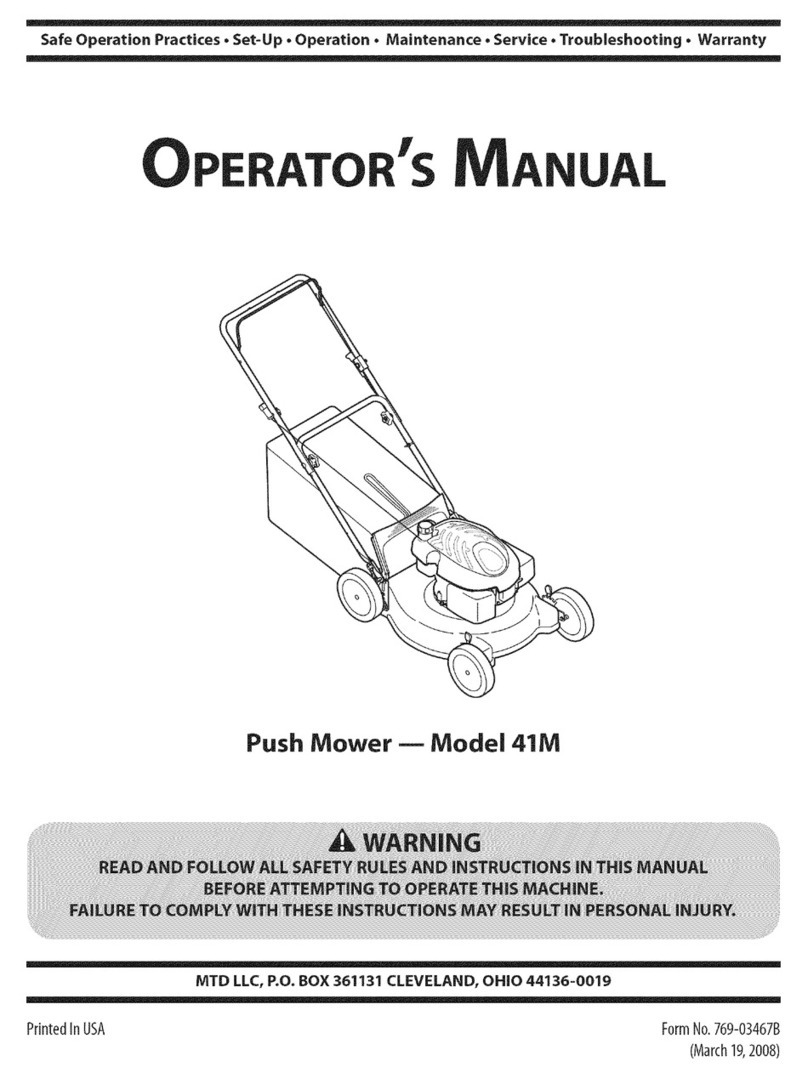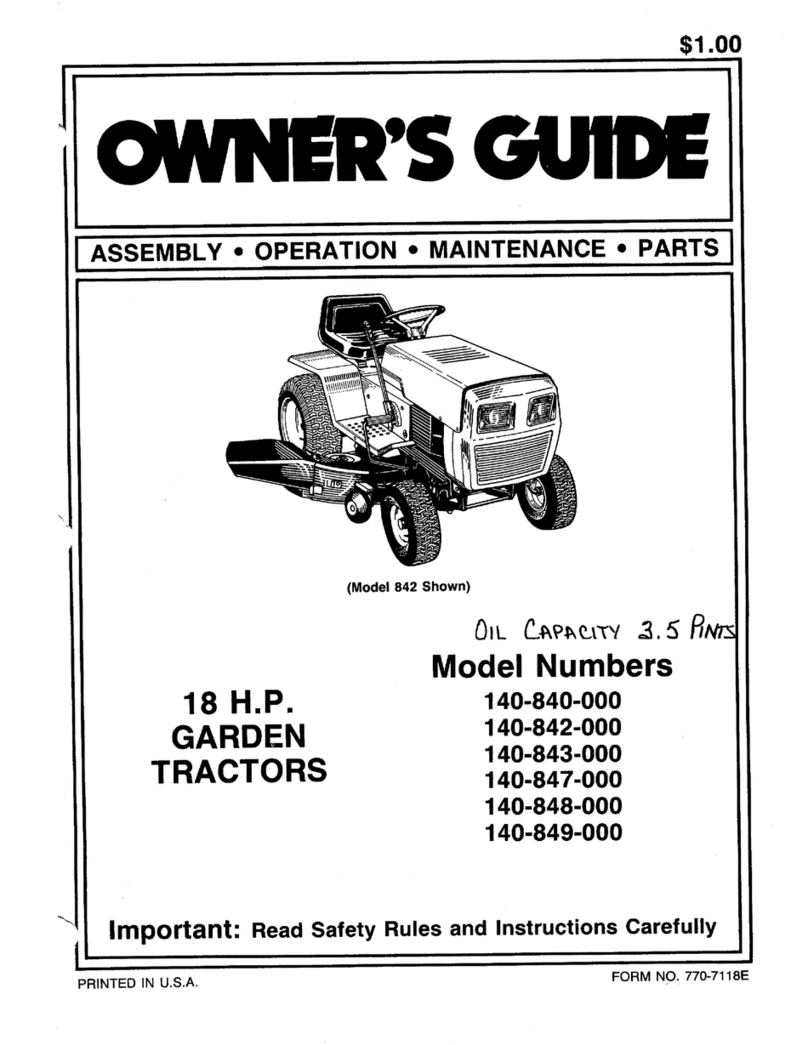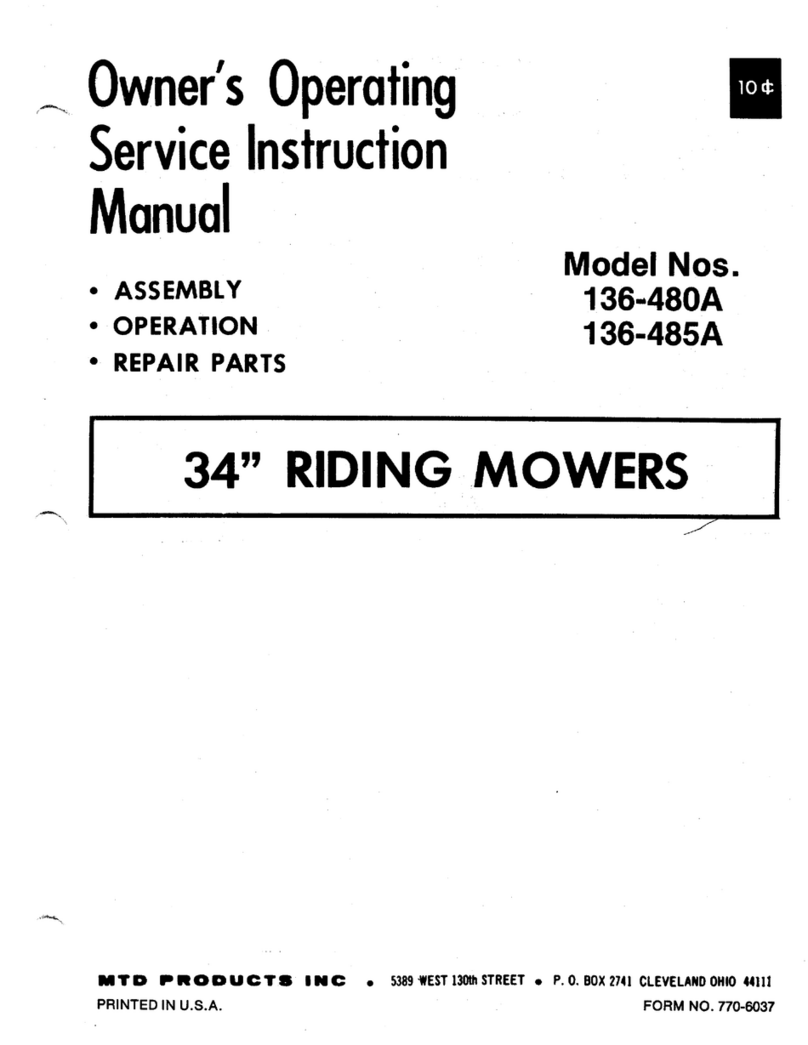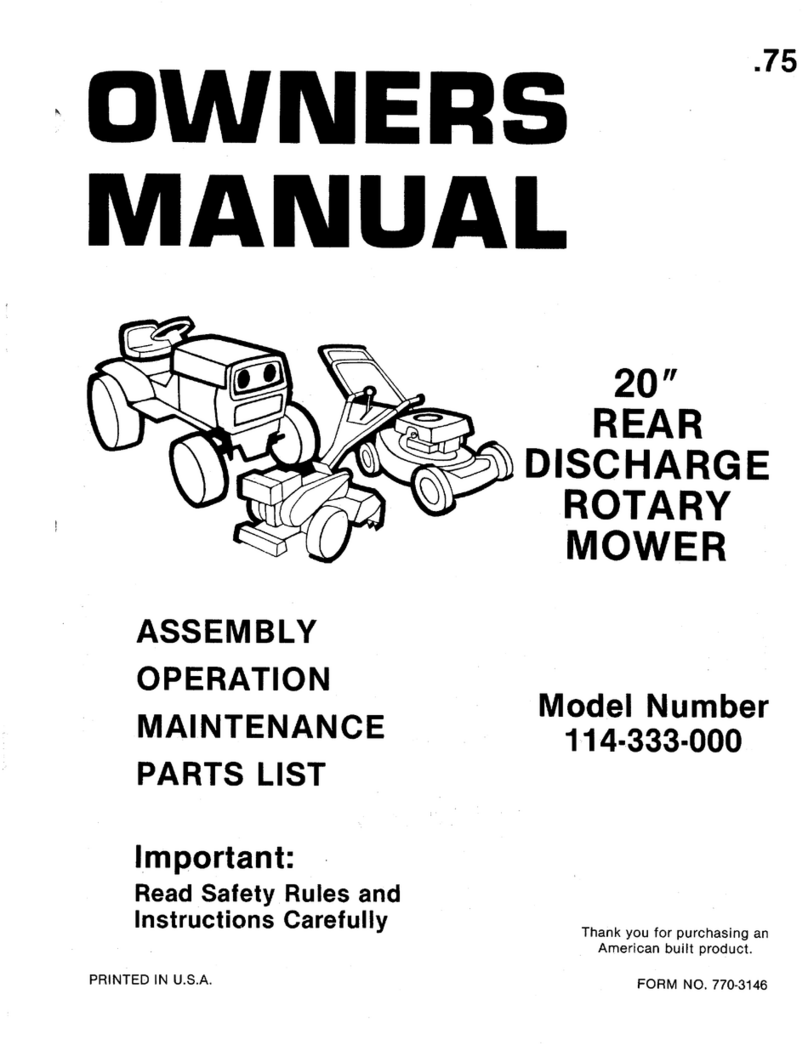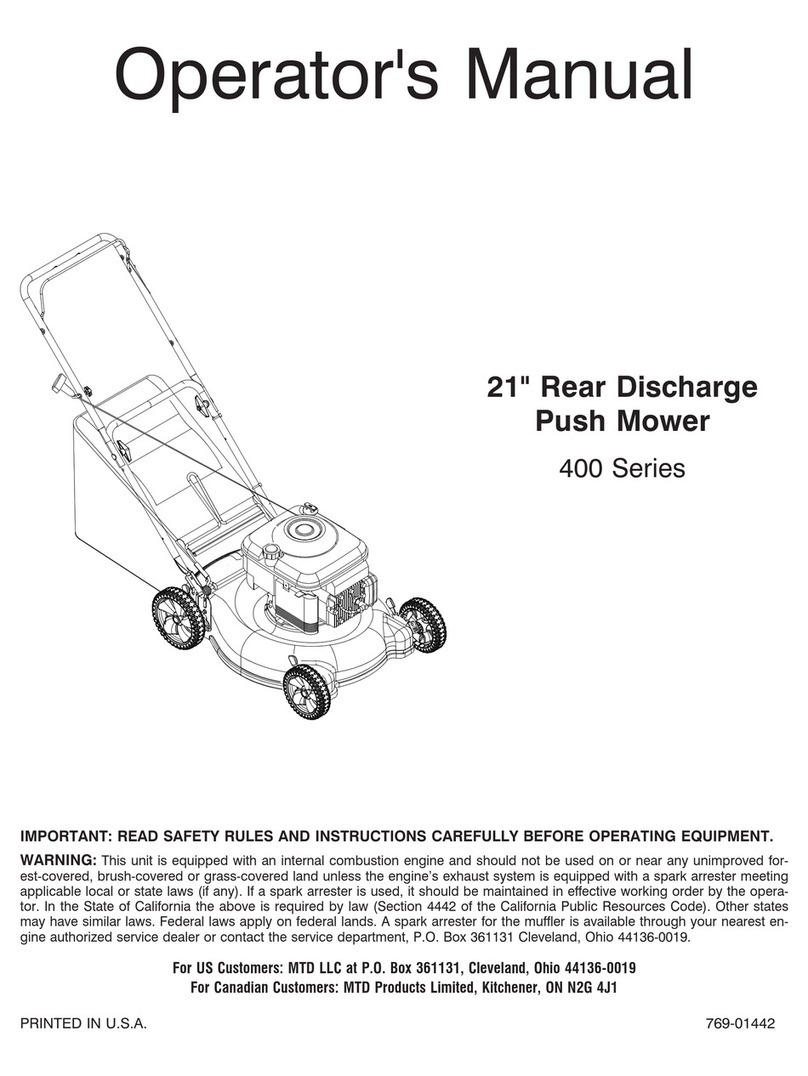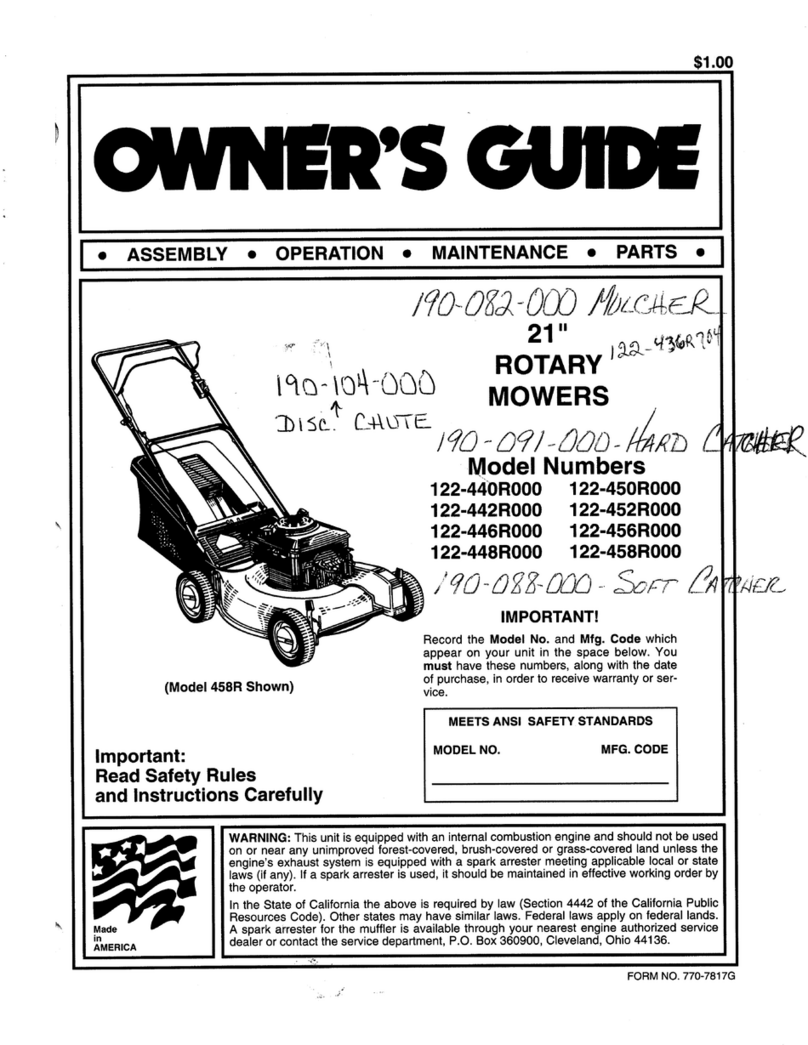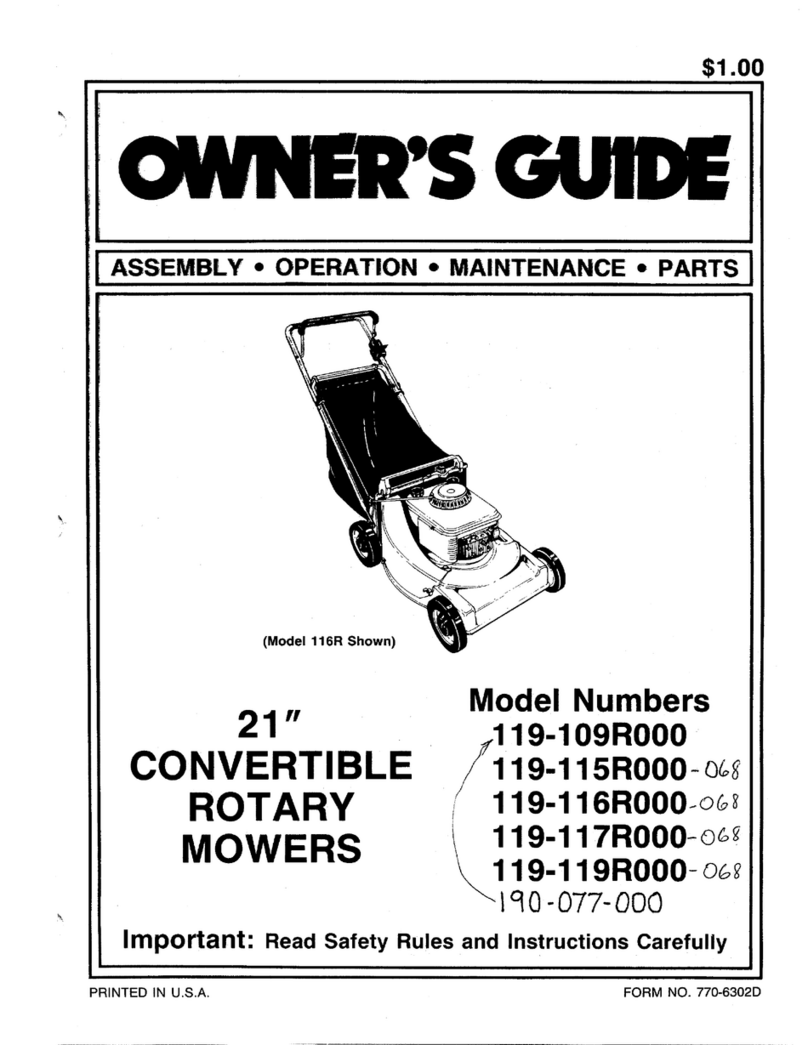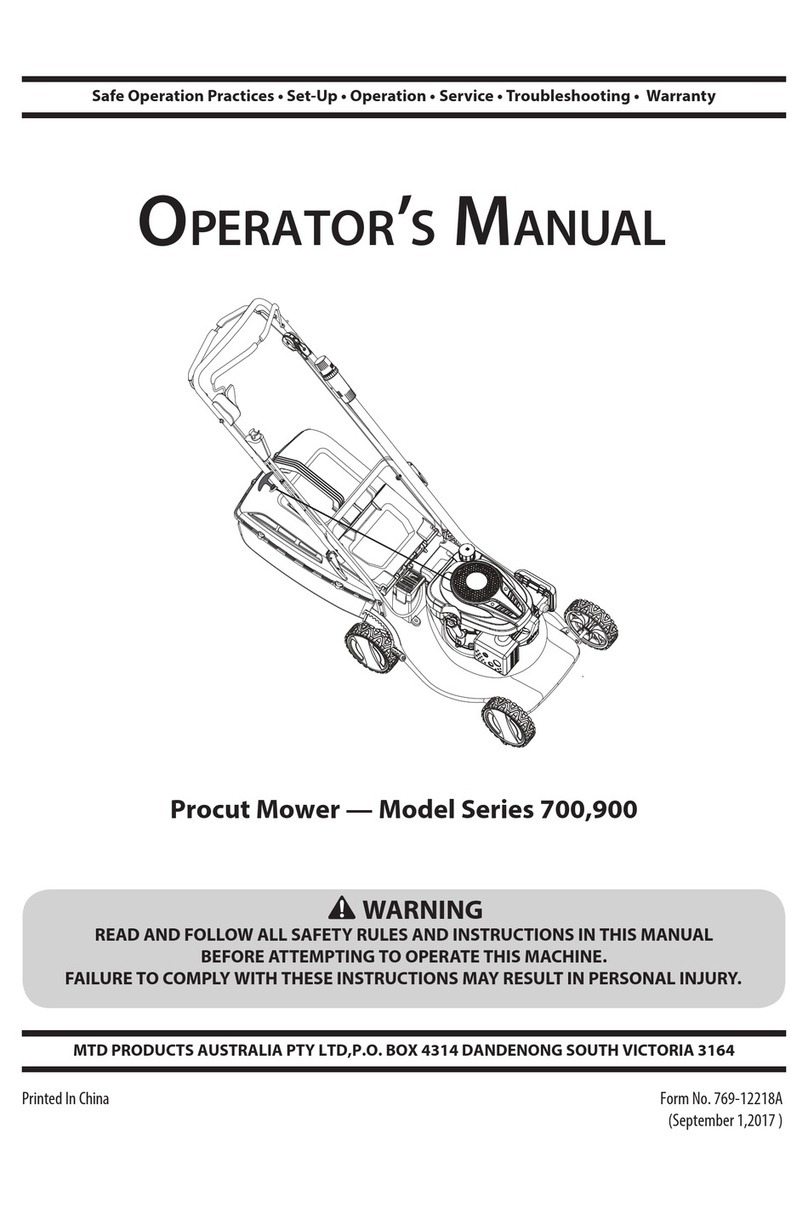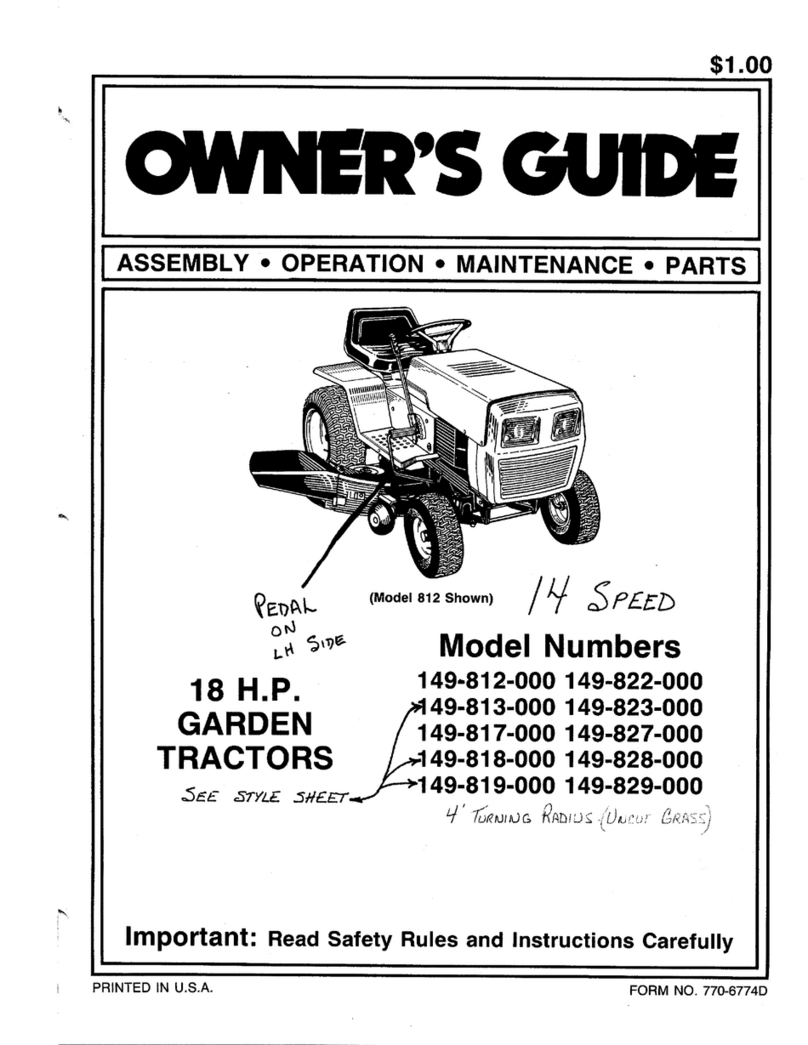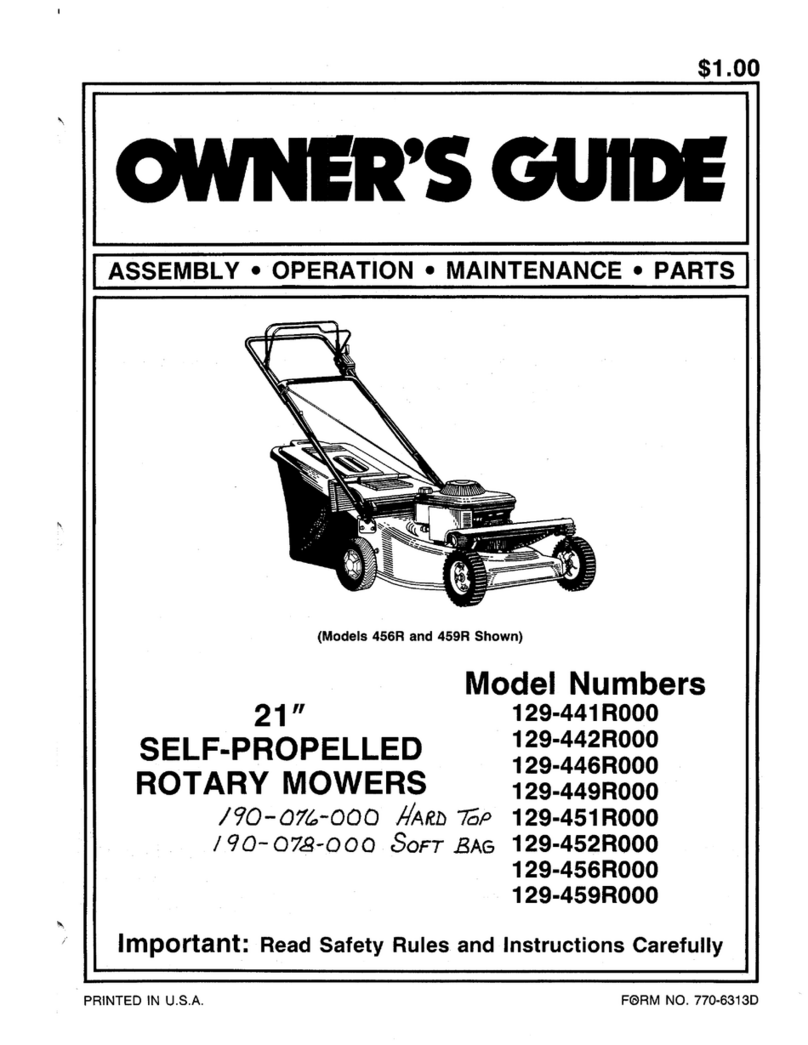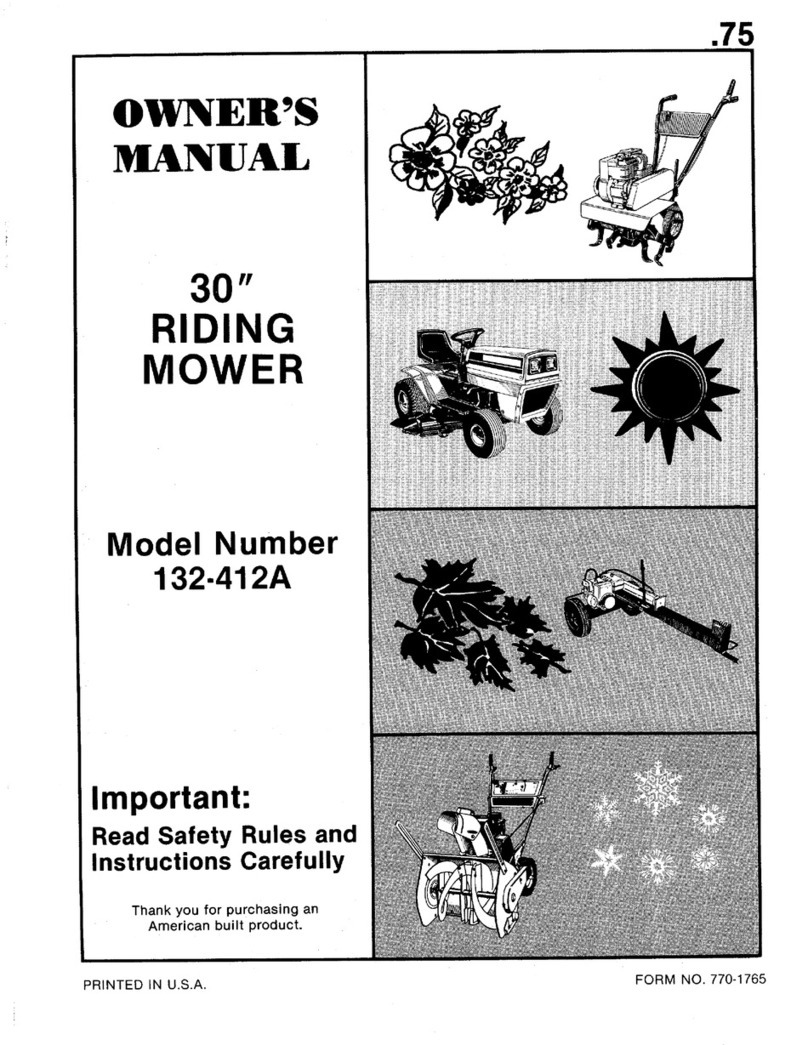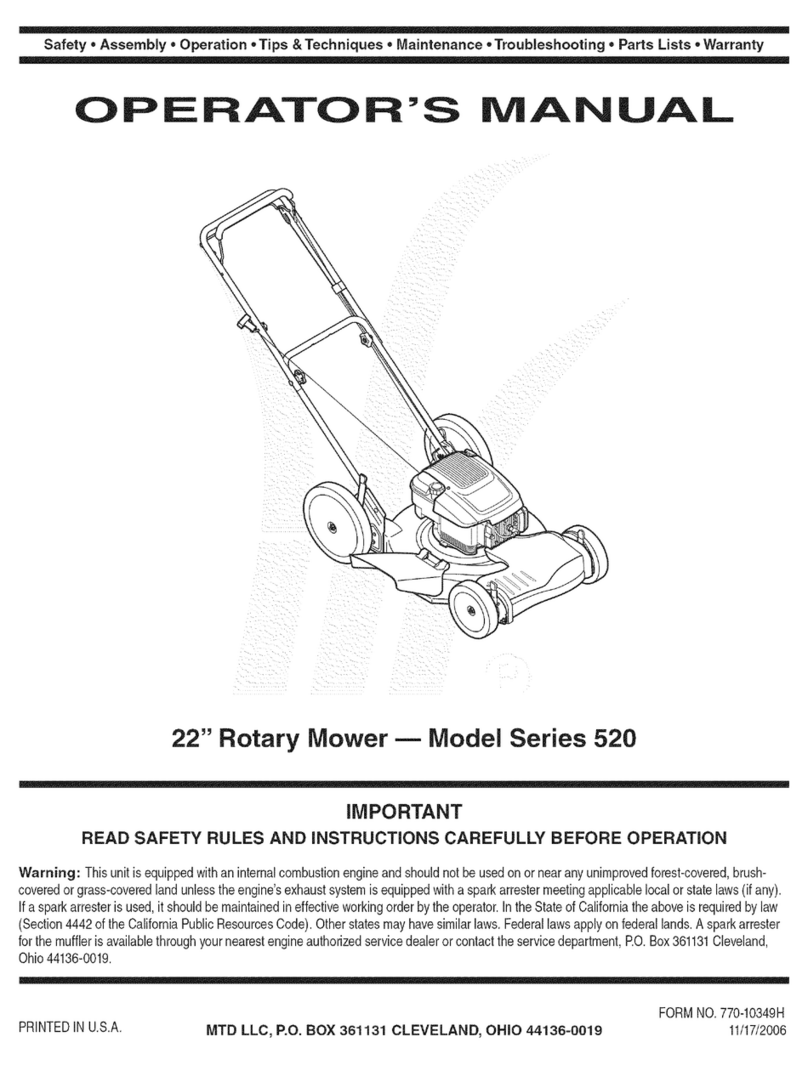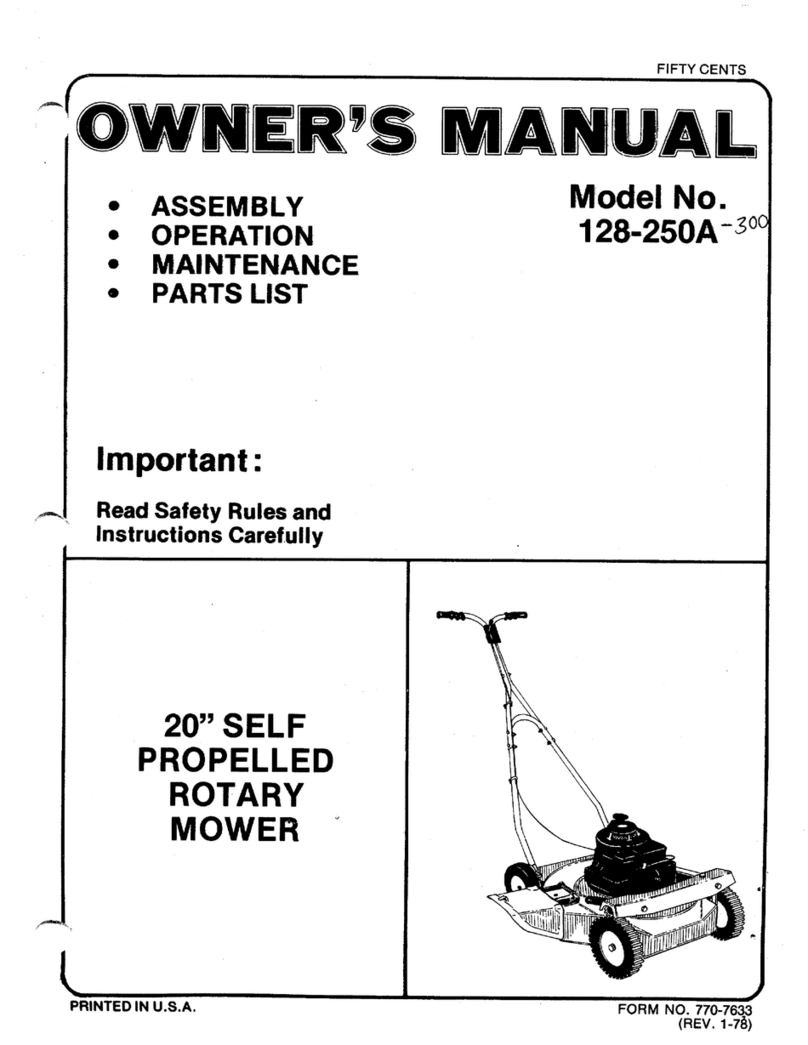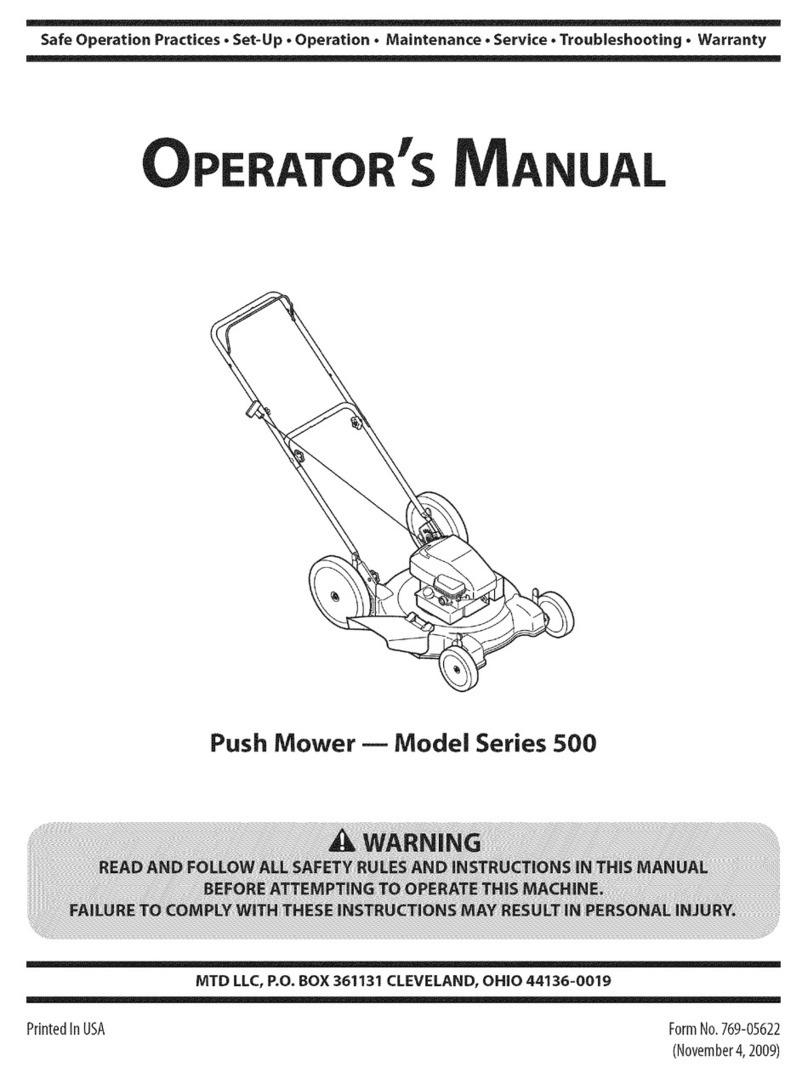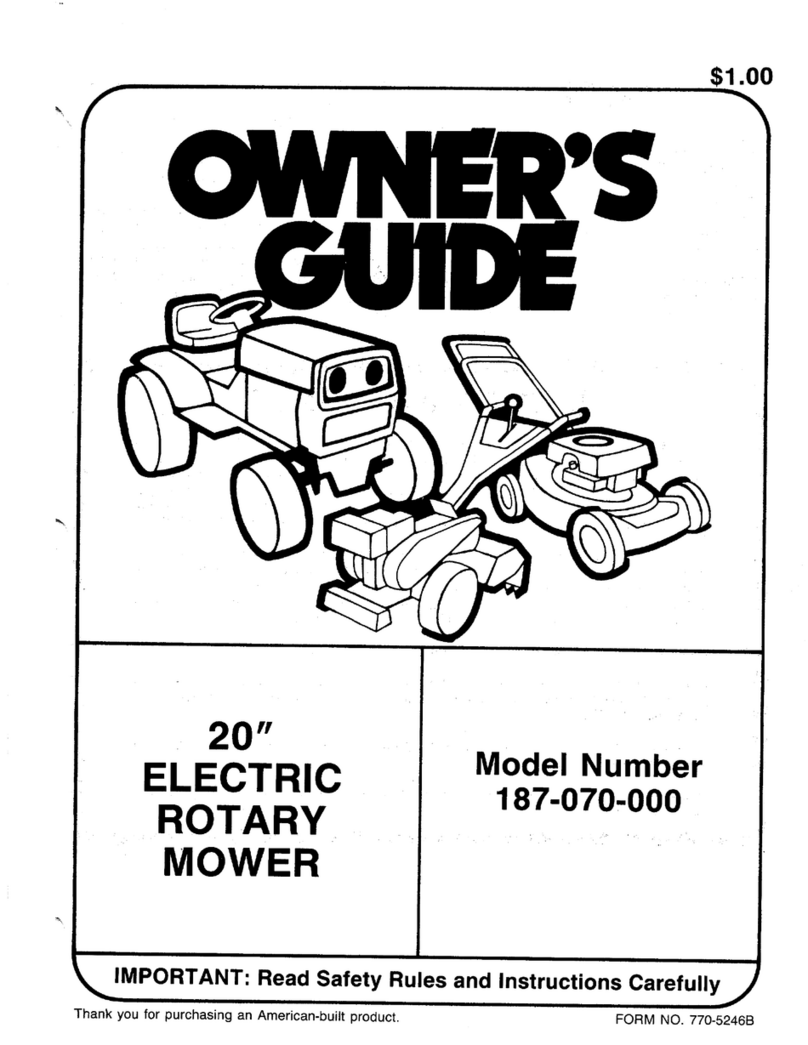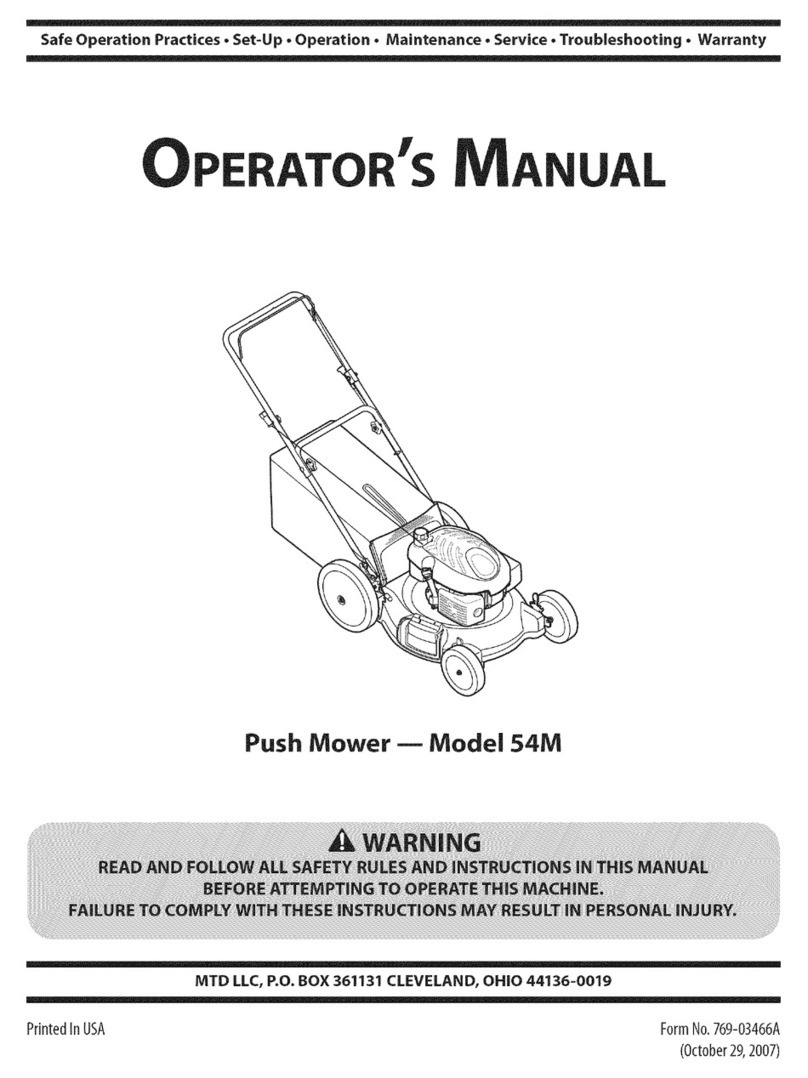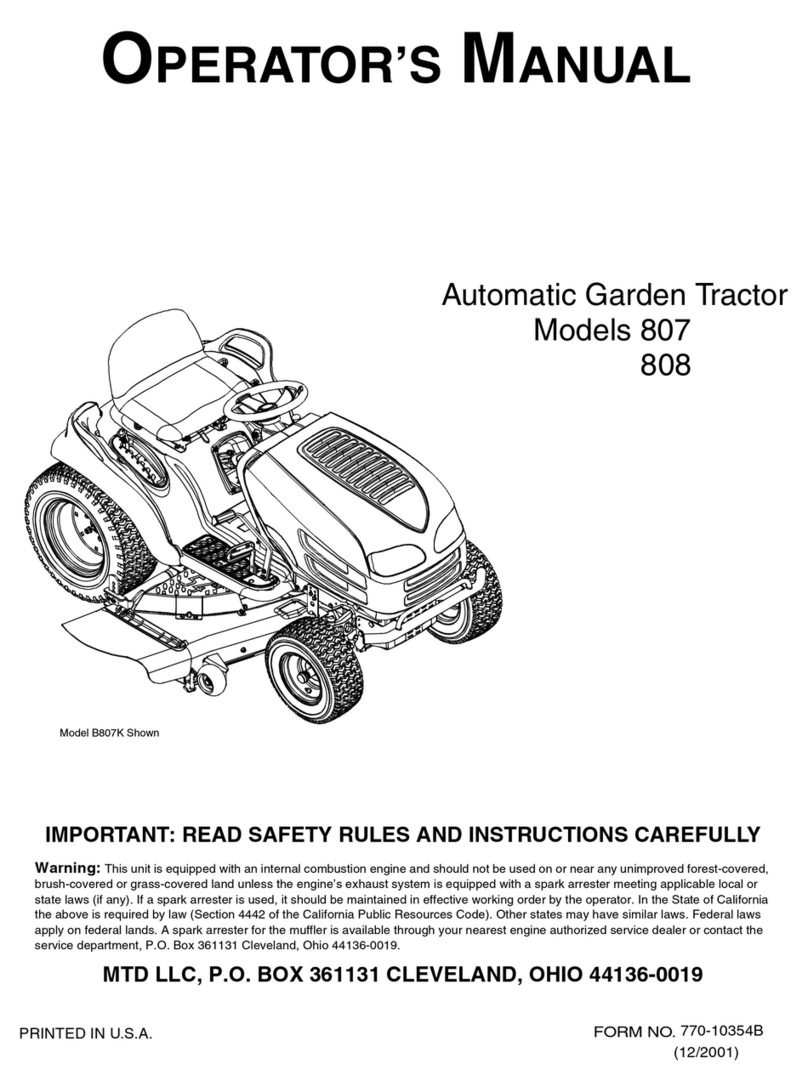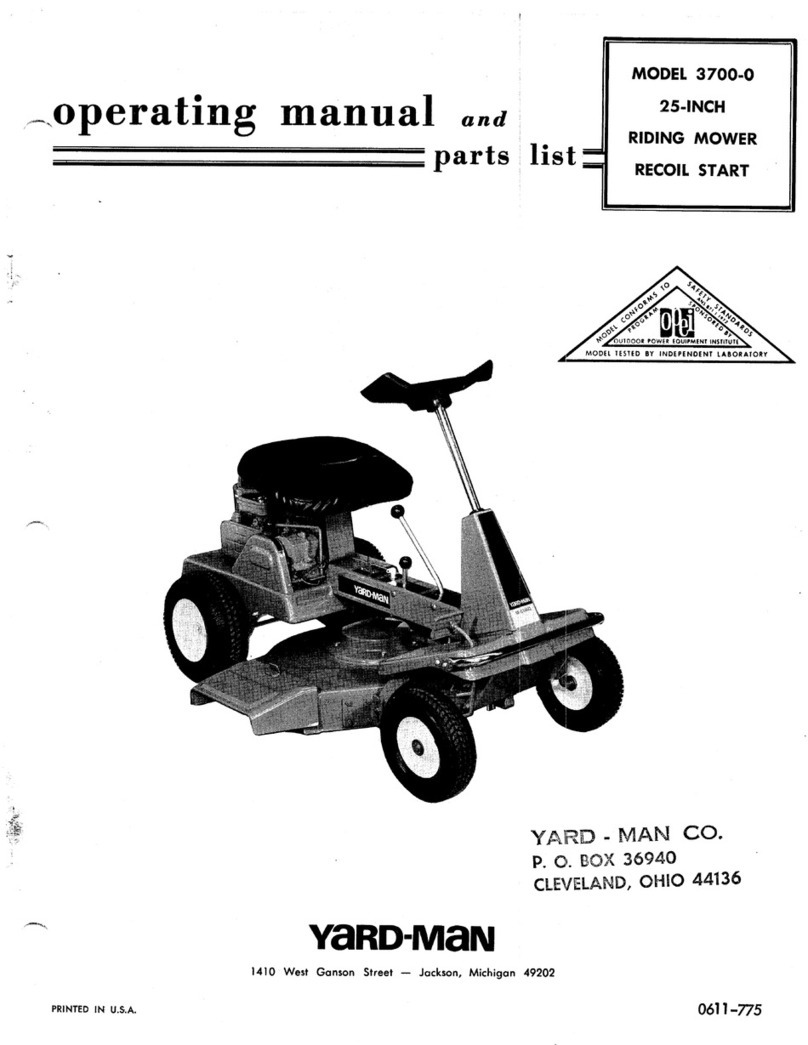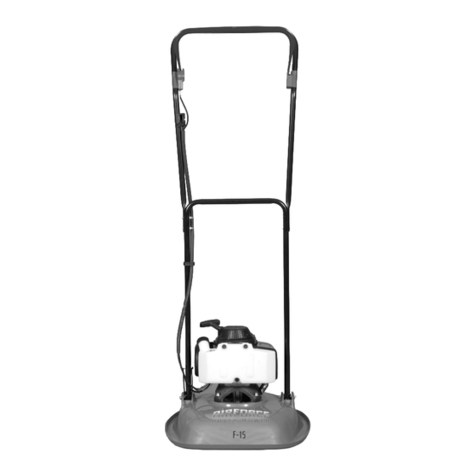
4
other safety protective devices in place and working.
Never operate mower with damaged safety devices.
Failure to do so, can result in personal injury.
21. Mufflerandengine become hot and cancause a burn. Do
not touch.
22. Onlyuse parts and accessories made for thismachine by
the original equipment manufacturer (O.E.M). Failure to
do so can result in personal injury.
23. If situations occur which are not covered in this manual,
use care and good judgment. Contact your dealer for
assistance. Telephone 1-800-800-7310 for the name of
your nearest dealer.
Slope Operation
Slopes are a major factor related to slip and fall accidents
which can result in severe injury. Operation on slopes
requires extra caution. If you feel uneasy on a slope, do not
mow it. Before operating this unit on a slope or hilly area, use
the slope gauge on page 6 to measure slopes . If the slope is
greater than 15 degrees, do not mow it.
Do:
1. Mow across the face of slopes; never up and down.
Exercise extreme caution when changing direction on
slopes.
2. Watch for holes, ruts, rocks, hidden objects, or bumps
which can cause you to slip or trip. Tall grass can hide
obstacles.
3. Always be sure of your footing. A slip and fall can cause
serious personal injury. If you feel you are losing your
balance, release the blade control handle immediately,
and the blade will stop rotating within 3 seconds.
DoNot:
1. Do not mow near drop-offs, ditches or embankments,
you could lose your footing or balance.
2. Do not mow slopes greater than 15 degrees as shown on
the slope gauge.
3. Do not mow on wet grass. Unstable footing could cause
slipping.
Children
Tragic accidents can occur if the operator is not alert to the
presence of children. Children are often attracted to the
mower and the mowing activity. They do not understand the
dangers. Never assume that children will remain where you
last saw them.
1. Keep children out of the mowing area and under the
watchful care of a responsible adult other than the
operator.
2. Be alert and turn mower off if a child enters the area.
3. Before and while moving backwards, look behind and
down for small children.
4. Use extreme care when approaching blind corners,
doorways, shrubs, trees, or other objects that may
obscure your vision of a child who may run into the
mower.
5. Keep children away from hot or running engines. They
can suffer burns from a hot muffler.
6. Never allow children under 14 years old to operate a
power mower. Children 14 years old and over should
read and understand the operation instructions and
safety rules in this manual and should be trained and
supervised by a parent.
Service
Safe Handling of Gasoline:
1. Toavoidpersonalinjuryorpropertydamageuse extreme
care in handling gasoline. Gasoline is extremely
flammable and the vapors are explosive. Serious
personal injury can occur when gasoline is spilled on
yourself or your clothes which can ignite.
2. Wash your skin and change clothes immediately.
3. Use only an approved gasoline container.
4. Never fill containers inside a vehicle or on a truck or
trailer bed with a plastic liner. Always place containers on
the ground away from your vehicle before filling.
5. If possible, remove gas-powered equipment from the
truck or trailer and refuel it on the ground. If this is not
possible, then refuel such equipment on a trailer with a
portable container, rather than from a gasoline dispenser
nozzle.
6. Keep the nozzle in contact with the rim of the fuel tank or
containeropeningatalltimesuntilfuelingiscomplete.Do
not use a nozzle lock-open device.
7. Extinguish all cigarettes, cigars, pipes and other sources
of ignition.
8. Never fuel machine indoors because flammable vapors
will accumulate in the area.
9. Never remove gas cap or add fuel while the engine is hot
or running. Allow engine to cool at least two minutes
before refueling.
10. Never over fill fuel tank. Fill tank to no more than ½ inch
below bottom of filler neck to provide space for fuel
expansion.
11. Replace gasoline cap and tighten securely.
12. If gasoline is spilled, wipe it off the engine and
equipment. Move unit to another area. Wait 5 minutes
before starting the engine.
13. Never store the machine or fuel container inside where
there is an open flame, spark or pilot light as on a water
heater, space heater, furnace, clothes dryer or other gas
appliances.
14. To reduce fire hazard, keep mower free of grass, leaves,
or other debris build-up. Clean up oil or fuel spillage and
remove any fuel soaked debris.
15. Allow a mower to cool at least 5 minutes before storing.
GeneralService:
1. Never run an engine indoors or in a poorly ventilated
area. Engine exhaust contains carbon monoxide, an
odorless and deadly gas.
2. Before cleaning, repairing, or inspecting, make certain
the blade and all moving parts have stopped. Disconnect
the spark plug wire and ground against the engine to
prevent unintended starting.
3. Check the blade and engine mounting bolts at frequent
intervals for proper tightness. Also, visually inspect blade
for damage (e.g., bent, cracked, worn) Replace blade
withthe original equipment manufacture’s (O.E.M.)blade
only, listed in this manual. “Use of parts which do not

